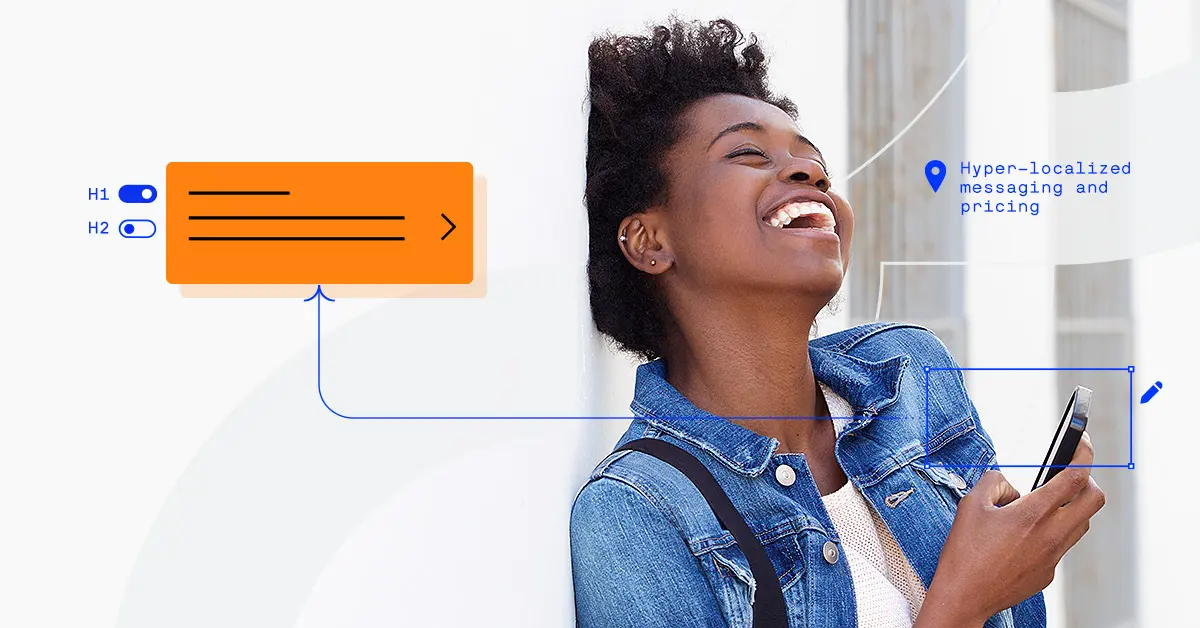How to engage more users and improve app performance using mobile app A/B testing
One of the tools app developers and mobile product managers are increasingly adding to their toolkits is A/B testing. Here are three simple yet effective in-app tips if you're just getting started with the process of future-proofing your mobile app and improving your retention rate.

Anubhav Verma

Having a discipline around A/B testing enables your mobile app to deliver engaging, high-ROI experiences by optimizing elements like signup flows, checkout funnels, and navigational elements, to name a few.
However, mobile app teams today are still trying to figure out the perfect formula to acquire, retain, and monetize their users. Any mobile app developer or mobile product manager (PM) will tell you that releasing new features in an app or changing aspects of the underlying architecture can be risky business.
If you push a buggy update for real devices, the only resolution to ensure the app works is pushing out another update and waiting patiently while the user upgrades. This process can take weeks, and in the meantime, users may uninstall the app out of frustration and leave negative reviews which hurt future installs. Here’s how to solve this issue.
How to test features on your mobile app
Here are three simple yet effective tips for those just getting started with app A/B testing and improving app performance.
1. Start with a strong foundation
Feature flags allow you to turn functionality on and off without deploying new code. It means more control and compatibility on mobile devices, so you can release more frequently and test and learn without impacting the user experience.
If you're wondering how feature flags work for device testing, they do it by building conditional logic into code. It allows you to control the functionality for specific users or groups, or turn it on and off for the entire user base. Time to say goodbye to messy rollbacks and hotfixes. If the changes you make give rise to errors, performance spikes, or a negative experience, you can immediately roll back the changes without going through the app stores to redeploy code.
Imagine controlling every aspect of your product without updating your codebase or app version. Feature flagging allows you to decouple code deployment from feature release, mitigate risks, and experiment with different versions of your app to learn what users want and what they engage with best.
Learn more: Inside the world of feature flags
2. Manage your features
Testing in production is a key step before releasing products to the public. It mitigates the quality assurance (QA) inadequacies that can arise during testing in a simulated environment.
Features we create are prone to our own bias. Internal testers can make this mistake as well. Testing internally in a controlled environment fails to account for every real-world scenario and type of user. Feature management is something that can help you test in production. It involves a fixed of users testing the feature first so you can catch production bugs and also, create a resilient mobile app experience for your end-users.
As a team, your mobile teams can continuously test, deliver, and deploy software or new features without the risk of rolling out bugs to the entire user base and dedicating emergency release cycles to hotfixes.
3. Rollback if needed
Every time you test your feature including a segment of real users, you receive feedback and data on what worked and what didn't. If the new functionality fails to produce the intended results, simply roll back the feature and work through the problem without impacting the entire user base.
Remember, you can:
- Accelerate development by integrating work in progress behind a flag
- Ensure positive results by gradually rolling out new functionality
- Rollback when there are issues in production on Android app or iOS apps
- Decouple code deployments from market releases
- Enable product experimentation (A/B/n testing)
Using a/b testing tools allows you to optimize for retention and alerts you to new functional testing opportunities. For example, if the conversion rate for a winning variation begins to converge with the conversion rate for the original, consider running a new test on this feature or experience.
You can follow a longitudinal approach to mobile application testing to eliminate these changes in real time. Even after a test has achieved statistical significance and the winning variation has rolled out, maintain a holdback for a small percentage of traffic so it always sees the original variation.
Ways to engage users and improve retention rate
Even if you have a robust testing process, you still need to have the key metrics and a well-defined thought process for your conversion funnel to impact user behavior positively.
For user engagement, think of different scenarios during the onboarding experience to optimize your mobile app. Consider the options on Android devices and iOS devices that allow for different types of testing. Here are 6 principles product & development teams can use to deliver resilient mobile apps that last.
Speed
First-time app users want guidance during app engagement, not information overload. With UI testing, ensure users need fewer steps to start using the app. Make it easy for the average user to find what their target is, quickly.
Interaction
Nobody likes to look at lengthy explanations or too many notifications, especially new users on your app page. Instead, focus on having an interface that helps users across their app journey. Prompts, call-to-action (cta), push notifications, tutorials, overlays, and end-to-end animations can help keep things brief and engaging on different devices.
Logins
Identify different workflows to experiment with to make the sign-in process flexible for mobile users. Use behavioral data to build hypotheses for testing to optimize the login UX and decide when is the best time to log in.
Transparency
Always be clear and honest with your users about how you intend to use their data to enhance their experience. Be committed to privacy and information security.
Focus
Once a user engages with your app, show more advanced features and functionalities in phases. Focus your mobile marketing efforts on helping them dive deeper into the app to benefit even more.
Data
Understand and empathize with your users through quantitative methods like a/b testing, and qualitative research such as usability testing.
Mobile app a/b testing use cases and case studies
Here are two use cases of leading digital businesses turning advice into action to achieve successful a/b testing results:
1. Quip using feature flags
The turnaround time when releasing mobile app updates can be slower as they have to be reviewed by the respective application stores. To solve this, the team used feature flags to mark beta features. In the event of a feature release not going as planned, they can now quickly toggle it on or off, providing more flexibility and peace of mind.
2. Ambassador Theatre Group (ATG) using targeted rollouts
During the seat selection process in the ticketing journey, ATG was facing a significant drop-off rate. They started using Targeted Rollouts to ensure controlled tests. It enabled them to canary test with quicker cycles in a real-world setting without making disruptive code changes.
Remember, even if you haven’t yet mapped out a test automation framework for testing mobile apps, you should be thinking about how you can mitigate the risk of new releases through feature flagging and phased rollouts.
Ready to get your mobile app ready before it gets out there?
Check out the 'Future-proof your mobile app with feature flags and experimentation' guide. See how to remove guesswork, offer lifetime value, and grab your target audiences’ attention using testing ideas right away. All tactics, no fluff.
